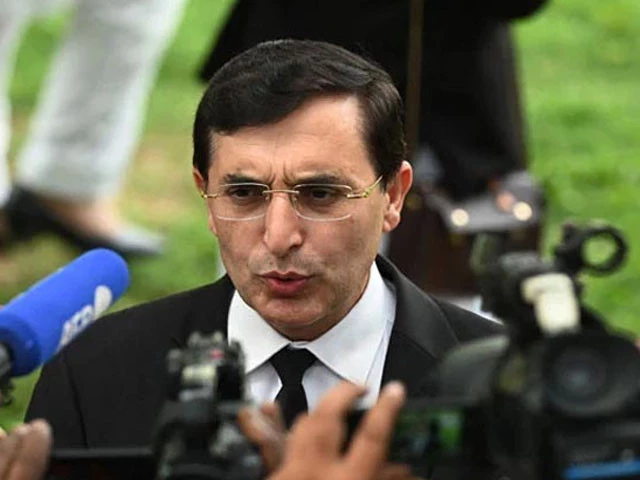A study published in Brain Communications looks at a brainwave test to measure memory decline years before Alzheimer’s diagnosis.
Prof Vladimir Litvak, Professor of Translational Neurophysiology, Department of Imaging Neuroscience, UCL Queen Square Institute of Neurology, UCL, said:
“This study represents an early step towards developing a clinically useful test, but it does not yet demonstrate such a tool. The authors replicated a previously reported laboratory finding, initially shown in a smaller patient sample, in a larger cohort recruited from a memory clinic. The press release states that EEG recordings were obtained in patients’ homes, although this detail was not reported in the paper. The study found a clear difference in EEG responses between patients with and without amnesia. However, the ability to classify individual patients using this effect, including estimates of error rates, was not assessed. Furthermore, all patients tested were already symptomatic. A crucial next step would be a prospective study to determine whether this effect can predict an individual’s clinical trajectory and support patient stratification for treatment. This is yet to be done.”
Dr Julia Dudley, Head of Research, Alzheimer’s Research UK, said:
“Too many families face dementia without answers, with one in three people with the condition living without a diagnosis. Therefore, it’s encouraging to see studies exploring potential ways to detect memory problems earlier. New Alzheimer’s treatments are proving to be more effective when given at earlier stages in the disease, therefore earlier diagnosis is key for people to benefit from this.
“This brainwave test works by monitoring how people respond to images by measuring their electrical brain activity. This study, in a small group of people, suggests that it can be used to measure mild memory impairment, which for some people can be an early sign of diseases like Alzheimer’s.
“However, as participants were only followed up one year later, we don’t know if those people will definitely go on to develop dementia. Longer-term studies in larger, diverse groups of people are needed to find out if this technology can predict how memory problems will unfold over time.
“Memory impairment can also be linked to other health conditions, not just dementia. Future research should look at how other factors may influence brainwave test results and explore how these tests could work alongside other diagnosis tools like cognitive assessments and blood tests.”
Dr Richard Oakley, Associate Director of Research and Innovation, Alzheimer’s Society, said:
“With more than 130 drugs to tackle Alzheimer’s disease currently in late-stage clinical trials, we urgently need new ways to diagnose dementia early and accurately, so more people can benefit from potentially life-changing treatments.
“Fastball is an encouraging step towards this and these early research results suggest that it could make future diagnostic options more accessible and inclusive.
“However, it is not yet a replacement for current diagnostic tools, such as brain scans or ‘pen and paper’ diagnosis assessments. It’s worth noting that the latter is designed for English-speakers and in some cases can generate biased results.
“Further research, involving more diverse participants, is needed to compare Fastball to established tests, like detailed brain scans and blood tests, to gauge its effectiveness for use with a wide range of people living with dementia today.”
Prof Sir John Hardy, Professor of Neuroscience and Group Leader at the UK Dementia Research Institute, UCL, said:
“Identifying individuals early for cognitive decline is going to be of increasing importance as therapies for Alzheimer’s and other dementias are developed and this protocol “Fastball” seems as if it may be helpful in this regard. What it does not do (and does not claim to do) is distinguish early Alzheimer’s from other causes of decline and this latter is also important. Because of this, it is likely that additional tests, biomarker or imaging, would also be needed for this second important aim.”
Prof Tara Spires-Jones, Director of the Centre for Discovery Brain Sciences at the University of Edinburgh, Group Leader in the UK Dementia Research Institute, and Past President of the British Neuroscience Association, said:
“This study from Stothart and colleagues demonstrated that a quick test reading brain activity while participants tried to remember images viewed a screen was accurately able to detect mild memory deficits. The results are an important step in developing quick and easy tools for accurate diagnosis of memory problems that could be a sign of early dementia. With new treatments being developed that work best in early disease stages, this type of early detection is very important in combination with other markers of brain changes including emerging blood tests for pathological proteins that accumulate in the brain during early Alzheimer’s disease. This study was robustly conducted but the number of participants was relatively small (33 people with memory deficits, 20 people with deficits in other cognitive domains, and 54 people without cognitive deficits). The follow up time was also only one year and there were no tests of blood, cerebrospinal fluid, or brain scans to confirm whether people had early Alzheimer’s disease. While this is a strong study, more work is needed before this test might be added to routine testing for early stages of diseases that cause dementia.”
‘A passive and objective measure of recognition memory in Mild Cognitive Impairment using Fastball memory assessment’ by George Stothart et al. was published in Brain Communications at 00:01 UK time on Tuesday 2 September 2025.
Declared interests
Dr Julia Dudley: “None.”
Prof Vladimir Litvak: “I undertake a paid consultancy for MAC PLC, a clinical trials company. This has no relation to this paper as far as I am aware.”
Dr Richard Oakley: “Alzheimer’s Society is collaborating with ARUK and PPL on the Blood Biomarkers Challenge to bring blood tests to the UK healthcare system, to allow early and accurate dementia diagnosis.”
Prof Sir John Hardy: “No relevant disclosures.”
Prof Tara Spires-Jones: “I have no conflicts with this study but have received payments for consulting, scientific talks, or collaborative research over the past 10 years from AbbVie, Sanofi, Merck, Scottish Brain Sciences, Jay Therapeutics, Cognition Therapeutics, Ono, and Eisai. I am also Charity trustee for the British Neuroscience Association and the Guarantors of Brain and serve as scientific advisor to several charities and non-profit institutions. This paper was published the journal Brain Communications, of which I am editor in chief.”















